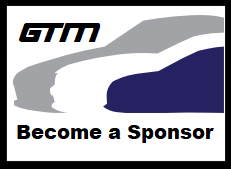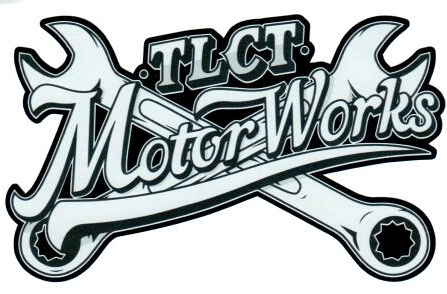Let’s set the stage: Andrew B calls Sam H, Sam calls Eric M, Eric calls John R… “hey, you want to go karting on the 23rd?” and the next thing you know “Team GTM” is signed up for a 3 hour Karting Enduro at Autobahn Speedway in Jessup, MD. For a few of us this was our first foray into Endurance Karting, but also into fully electric Karts. Being the outsiders and relatively new to Autobahn, we had some quick ramp up to do.
This event was an extension of Autobahn’s league nights as a new Enduro Series. There were a lot of participants, 9 teams ranging from 2-4 drivers who were set to drive a 3 hour race starting at 7:00pm on their “Monaco” circuit. (photos from the event can be found here)
> pause, time for some quick math <
3 hrs = 180 minutes multiplied by 60 that’s 10,800 seconds / 24 sec (avg lap time) = holy smokes… 450 laps, roughly 112 laps per driver! But unlike traditional karting tracks with karts powered by a Honda or Briggs engine, Autobahn is the “way of the future” with fully electric battery powered karts. The race officials had announced that we had a mandatory “15 stops” to make before the end of the race. Wait, what? 15 stops… more math… 180 divided by 15 that’s a 12 minute session per driver (roughly 30 laps). “Hmm… what’s the battery life on the Karts?” asked Pit Chief, Brad N. *more on that later*
The Good – GTM came ready to rock! The team consisted of Kandy (Andrew B), Monte Quattro (Eric M), Crowd Control (John R), and Swipe Right Turn (Sam H), along with a few cheerleaders, which included Mama Quattro, Doug T and Kerwin W. Everyone arrived on time and ready to go… except Andrew, who forgot his GTM schwag and his helmet, no matter, we had extras. During qualifying, Eric M set a respectable lap time of 0:22.704 which wasn’t too far off the pace of the majority of the other teams. Throughout the race, as our team became more comfortable with the track and the karts, each driver settled into a rhythm, surpassing their previous fastest lap with each session. Near the end of the race, the team would set a best lap time of 0:22.343 bring them into the top 5 for overall bests. Because of the pace of pit stops, the team was able to hit the 15 stop requirement with about 30 minutes left to go, meaning the last couple drivers could stretch their stints for as long as possible.
The Bad – There is no good way to say this but, the track itself was terribly unorganized. Prior to race day, participants were instructed to arrive by 6:00pm for a drivers meeting, and many people did. The assumption was that they would qualify from 6:10pm-7pm and the race would start promptly at 7:00pm. Reality: The qualifying didn’t start until about 7:15pm and the race didn’t kick off until 8:15pm. And yes, there was still 3 hours of racing, which meant the race concluded just shy of 11:15pm.
> climbing on a soapbox <
Ahem… As motorsports enthusiasts, we tend to be “petrol heads” not energizer bunnies. Petrol, Gas, Fuel… you remember – that stuff that goes “boom” in your engine and creates power and torque? For the sake of argument we’d like to make the distinction upfront: Gas Engine — Electric Motor, there is a huge difference.
By comparison electric motors are quiet, smooth, clean and can create torque almost immediately. However!, under extreme conditions like Karting (or Formula E) what you will find is that the very “digital” nature of the electric motor, becomes extremely binary. What do we mean by that? First, throttle response (if you can even call it that) is controlled by a voltage regulator by way of a throttle position sensor (rheostat), which tells the system how much voltage to deliver to the motor. That “instant torque” you feel is the ZERO-to-MAX amps that the electric system can deliver to the motor. There is very little “ramp up” in terms of speed, and the drivetrain reaches near terminal velocity very quickly. #ludacrismode
One of the major downsides of electric motors, in racing, appears when trying to modulate corner entry and exit speed — aka: trying to carry momentum through a turn. As mentioned, the throttle acts more like an on/off switch than what you are accustomed to. Finding “the spot” in the throttle is near impossible since the voltage can fluctuate too rapidly. Unlike a gas engine, when your foot is off the throttle, there is no “decel enrichment” or “part throttle” the electric motor is OFF which means the motor is spinning only because the (direct drive) drivetrain is forcing it to do so. Getting back on the throttle means an abrupt surge of power back through the drivetrain, often resulting in minor wheel spin.
So where are we going with this? The flywheel … the flywheel has been the keystone to any fuel based engine since the first engine was created in the 1880s. In a way, that disc shaped rotating mass helps keep an internal combustion engine balanced, but it also acts – in a small way – to keep the motor in “perpetual motion.” With a flywheel you have smoother decels, you can feel the engine rev or bogg, you can anticipate “the power band,” it helps to maintain torque, and most importantly (by way of a torque converter or clutch) a way to disengage the engine from the drivetrain. There are many other traits of a gas engine we’ve learned to take for granted that an electric motor does not afford us.
Therefore, based on what you know about gas engines, racing a vehicle with an electric motor becomes a very disappointing and frustrating experience. Not to mention that in the karting world a gas-powered kart can run for hours on a single tank of fuel compared to the “minutes before shutdown” that occurs as the batteries drain.
> takes a breath and steps down <
And now, for the Ugly, using electric karts for an extended time, means they will require recharging. The first few sessions went off without a hitch as fully charged karts were prepped and ready for the next drivers. By the end of a run the karts were noticeably slower and underpowered, and later in the evening meant karts were rotating quickly and were only getting a few moments on the chargers. It was a crapshoot as to whether you would jump into a fully charged, half charged or barely charged kart. Our starting stint timer of 11 minutes was changed to 9 minutes due to lap times falling towards the end of each run.
The racing itself was ruthless. Many of us from GTM had never seen or participated in a karting event like this before so we weren’t sure what to expect, but from our viewpoint, it was pretty bad. Bumping, pushing, spinning, blocking, cutting people off, etc. Folks failed to realize this wasn’t a race about position, it was an enduro, which meant it all came down to pit strategy.
At one point team leader Eric M came in a lap early due to incident, being hit and pushed to the point of reactivating an old neck injury. There was screaming, yelling, pointing … and that was just our team. #beastmode. We know its racing and every second counts, but there didn’t seem to be any driver etiquette at all from the other teams.
Back to the race, we made strides early moving from the back of the pack all the way to to 3rd place for a brief period before a pit stop and then 5th for a while. Our session lengths varied from 15 to 9 minutes depending on the conditions. Brad N did an excellent job managing the team and using his “cherries and berries” police-like strobe light to signal when it was time to come in for a change. Keeping an eye on “last lap times” really helped make the call.
Due to some mishaps and kart issues we fell back into 7th place. At one point the transponder fell out of John R’s kart, costing the team a minute and a half (about 5 laps), dropping us back to 8th. The team was now in a seriously heated battle with the 7th place team. Over the course of the final hour there were several position changes between the two teams, the race literally came down to the wire and had a last-5-minutes pit stop not occurred, we might have pulled it off.
Remember that pit stop strategy of 11 minute stints? By the end we had 2 extra pit stops (total of 17) due to some poorly charged karts. It was really hard to tell whether it was worth taking the 2 second per lap time drop and driving the kart until it stopped completely or coming into the pits for a driver change that could take anywhere for 40-90 seconds (including any penalty holding).
Upon reflection, the strategy could have hindered the team more than it helped, coupled with the inconsistencies between each kart, the team ultimately didn’t do as well as we had hoped. The lap times were there for parts of the race, but our stints were inconsistent and there were too many issues (black flags, broken karts forcing unplanned pit stops, etc.). The team ultimately came in second-to-last place, a disappointing finish, but a finish nonetheless.
After the bumps, bruises and scrapes… after scratching and clawing their way through the field, fighting for every precious inch of track and lap time, the team ultimately came in 8th place out of 9 teams. Please note, the 9th team quit racing with about an hour and a half left to go. #insulttoinjury.
Learning from the experience, if GTM is going to field a team again for a future enduro, a refined pitstop strategy should be employed. Now that the team has this one under its belts, they have a little more experience moving into the next one. Admittedly, it probably wasn’t the best representation of our abilities as drivers, and there were definitely some strikes against us, but its was a great team building event, we had fun and we are looking forward to racing together … in gas-powered karts 😉 #121jigawatts
Overall, we are proud of our guys and can’t wait to see team GTM do it again. We hope you can make it out to the next one, and if you are interested in participating in an event with other GTM members, please let one of the Crew Chiefs know.


















